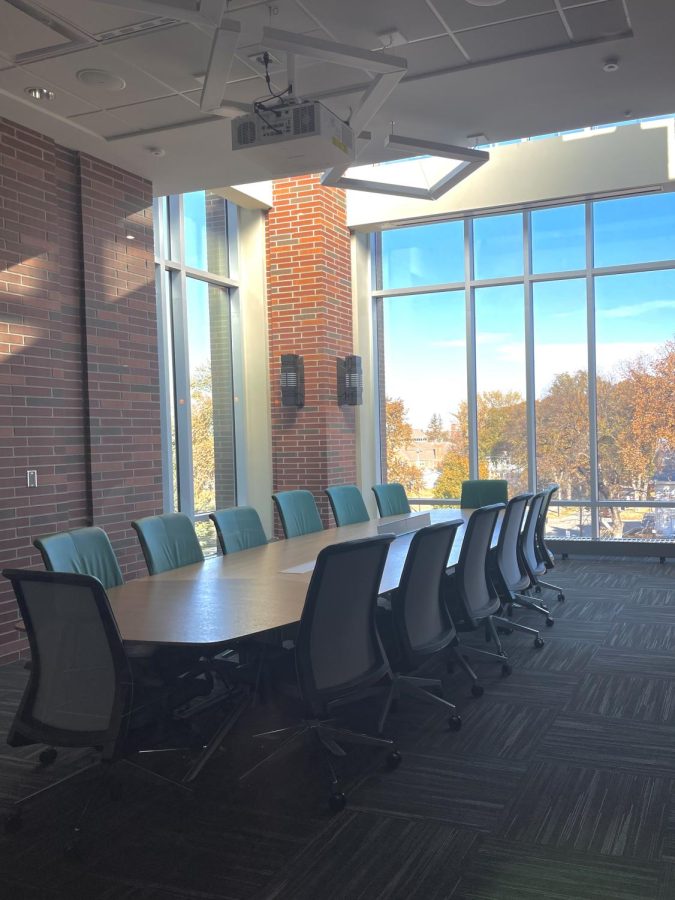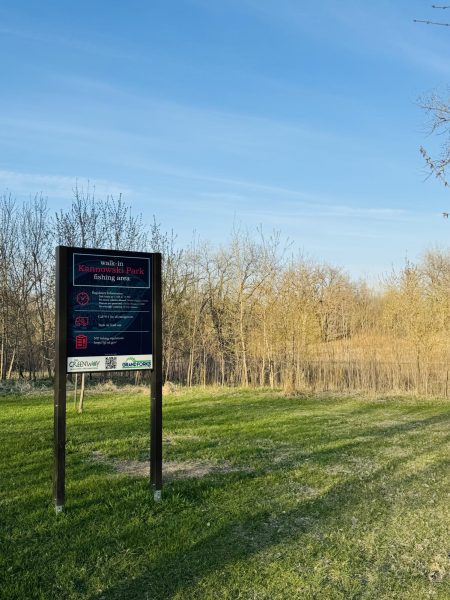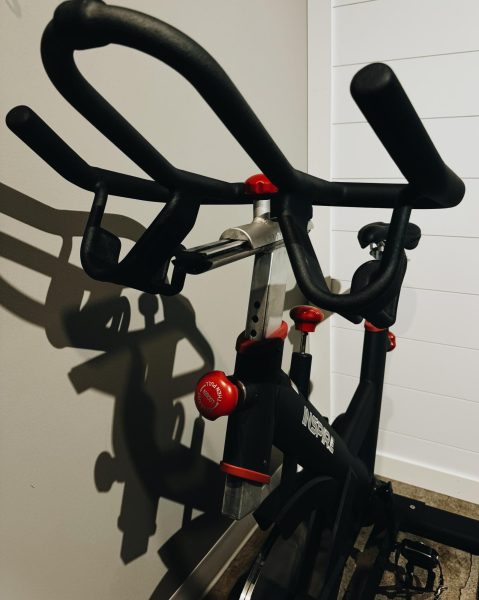A Study Room of One’s Own: An Examination of Study Spaces on Campus
November 2, 2022
Where to study is a common question among students on the University of North Dakota’s campus. It is typically acknowledged that everybody learns and studies in different ways. Some students need to study in absolute silence or else they cannot focus. Others need to have white noise or classical music in order to keep them on track. Certain students may prefer to study alone in order to avoid distraction, but others may not get anything done unless they have an accountability partner to help them stay on task. There are a variety of students on UND’s campus and with them a variety of study styles. As such, there are places all over campus for students to study, but whether there are enough dependable spaces to support differing student’s needs is an important question and an ongoing investigation.
A lot of modern universities and businesses are focused on collaborative group work, and group projects are certainly not lacking on UND’s campus. Plenty of programs include an abundance of group work, and as such, it is important to have places where students can go to work with each other on class projects. However, oftentimes the study rooms on campus are occupied, and it is not unusual that only one person occupies them. Students at UND come from a variety of places, especially with the aviation program enrolling students from all over the country and the world. However, many of the students at UND are local to the Midwest, and typically, Midwesterners tend to be more individualistic people. This could be a reason why many study rooms are often taken by a singular student, and why most students will opt to sit as far away from other people as possible when given the choice.
This phenomenon can be at least partly attributed to manners. For instance, if a student knows that they have to watch videos in order to complete an assignment and do not have any headphones, they might seek out an enclosed study room to not disturb their peers. Another aspect of this could be the concept of personal space that is typical among Americans in general. We Americans certainly enjoy having our own space in which to work and live, and that often extends from residences to campuses. The idea of having your own private nook in which to study is attractive to many students, and therefore, when given the choice of sitting at a table next to another person or at a table at the other end of the room, most people will choose the farther option. This choice does give the illusion of more space, and therefore, a sort of privacy that most people enjoy when studying or working.
This tendency towards individualistic studying becomes a problem when many of the spaces on campus are designed more for open collaborative work than individual or small-team work. Open study spaces are particularly unattractive to individual students juggling hybrid classes and schedules. These students may find themselves on campus for an in-person class and then on Zoom for an online synchronous class only fifteen minutes later. Oftentimes, fifteen minutes is not enough time to walk to one’s car, drive to one’s residence, and get set up for a Zoom. In this case, students who do not live on campus are at a disadvantage. In those fifteen minutes, they have to find a dependable place on campus where they can attend their Zoom classes in relative privacy.
A student’s first thought might be the library. The library on campus has limited study rooms available for students on a first-come, first-served basis. These study rooms do offer a variety of features, as some have nice windows, others have light controls, and various whiteboard spaces. Some rooms even have monitors and screens that students can hook their computers up to for presentations or other academic-related purposes. While these study room features are helpful and cater to student needs, the rooms are almost always completely occupied during the school day and during other busy study times, such as Sunday evenings. The upper floors of the library also tend to be quieter in the common spaces to accommodate for those students that need silence to concentrate. The well-liked reading room on the second floor does not require silence, but it is typically silent anyway with most students opting to do groupwork elsewhere due to the loud, echoey nature of the room.
Not wanting to break the peaceful silence of the reading room, most students would opt to not participate in their zoom classes there, especially if the classes require active vocal participation. Even with headphones in, the student would still have to disturb the quiet with their required participatory responses. With no open study rooms and nowhere to go where they could reasonably expect not to be overheard by others or disturb those who are studying, a student might venture to the Memorial Union, but the union has the same problem. The few enclosed study rooms available throughout the building are first-come, first-serve and, like the library, are almost always completely occupied during the day. Wilkerson maintains the same issue. That leaves no dependable, enclosed spaces in the three student-oriented buildings on campus where students can study, attend online classes, or take tests.
There are other options, however, for students who need to take a proctored test. In some buildings on campus, such as the Education building and the new Nistler building, testing rooms can be reserved by calling ahead and scheduling in advance. There are study areas in other buildings as well, like the union and the library, but many of them do not allow reservations, and therefore, cannot reliably be counted on as a sure space to study. Because the various study rooms on campus are frequently occupied, it is safe to assume that many students enjoy and perhaps even prefer to have their own space when studying on campus. This may be because of the aforementioned reasons or for other reasons as well. Some students may prefer a study room because they have a lot of papers that need to be spread out over a large surface for examination. Maybe they require a whiteboard and would like to keep the writings, perhaps part of an assignment, private. It is possible that they will need to watch a video or listen to something out loud for lack of headphones or other reasons. Whatever may be the case, it is apparent that the study rooms on campus are extremely popular and oftentimes, the demand outweighs the supply.
There is, of course, no shortage of open spaces littered with various tables, chairs, couches, and other furniture on campus. The reading room in the library has beautiful, high ceilings and benches along the wall that are heated in the winter. There is also a fireplace and plenty of armchairs that are great for reading. Of course, there is also a variety of tables for studying in this room. In the Union, a three-story atrium provides plenty of natural light as well as various tables, chairs, and couches for students to gather and study. The new Nistler building also includes a large atrium focusing on natural light and wide-open spaces. All of these open spaces are beautiful, and the natural light is sure to be wonderful during the coldest days of winter. However, while many of these open spaces are often used by students, it is interesting to ponder how many of the students in these spaces would prefer a study room if one were open to them.
The University has undergone several renovation projects recently. Updating the Memorial Union, constructing a new business school building, renovating the library, and redoing areas of the quad are all updates that the University has made to campus in recent years. A recommendation for UND regarding study spaces is to consider more private study rooms in upcoming renovations. This could be accomplished through the development of buildings that are not currently in popular use or simply through the addition of more study rooms in renovations that will take place in the next several years. More study rooms would cater to the changing needs of students as hybrid courses become more prevalent and as students’ desire to “set up shop” in a private room remains consistent. I think it is also important to consider differing uses for the study rooms, and as such, some of them could be reserved and accessed with student ID cards. This would take the stress out of finding a place to take a test or attend a class. Additionally, several study rooms could also continue to operate on a first-come, first-served basis to accommodate everyone. UND may have no shortage of study spaces but adding more enclosed study rooms is never a bad idea for a campus in the Midwest.
Gabrielle Bossart is a Dakota Student General Reporter. She can be reached at [email protected].












